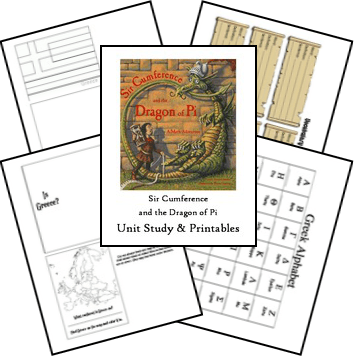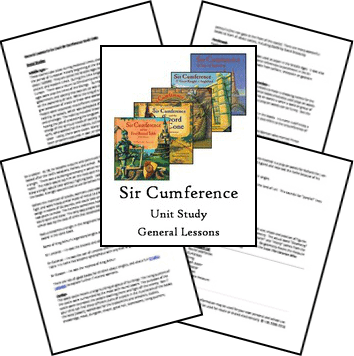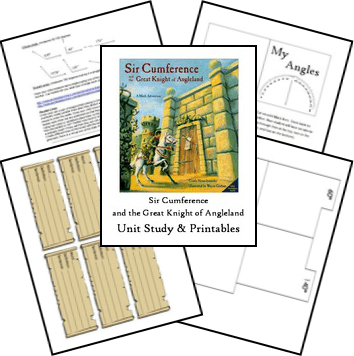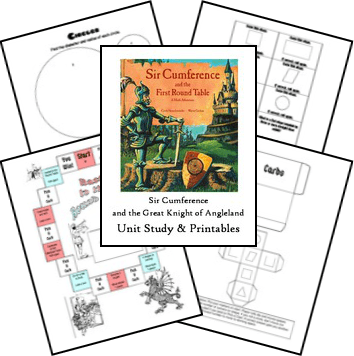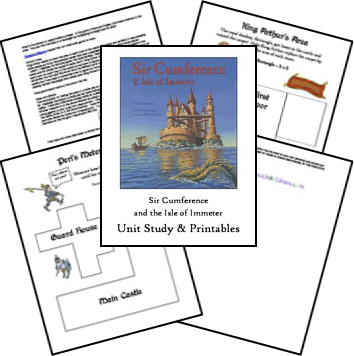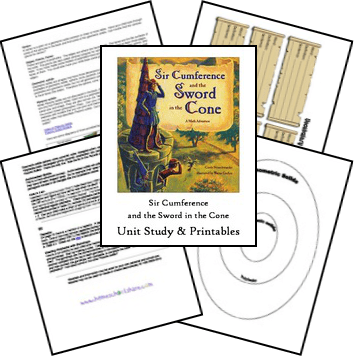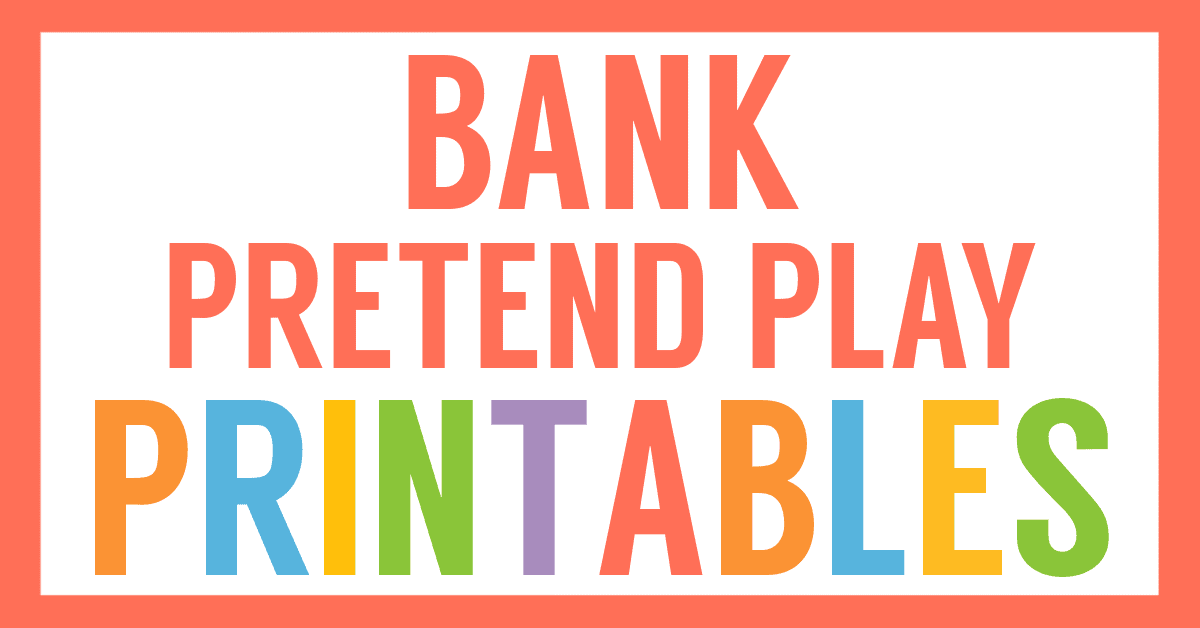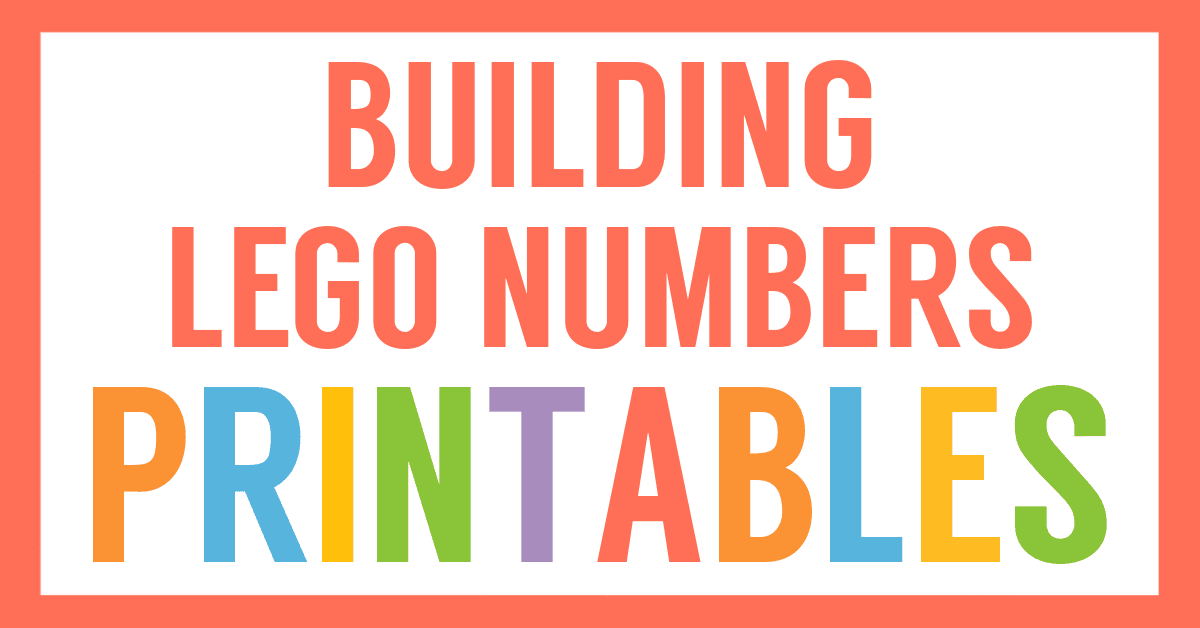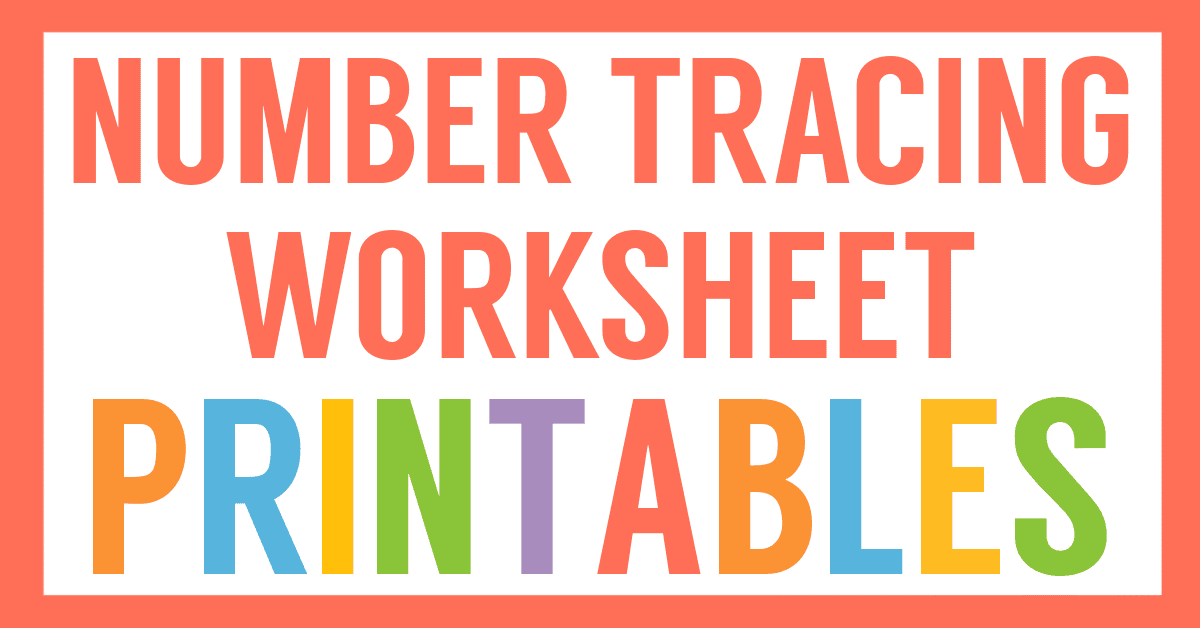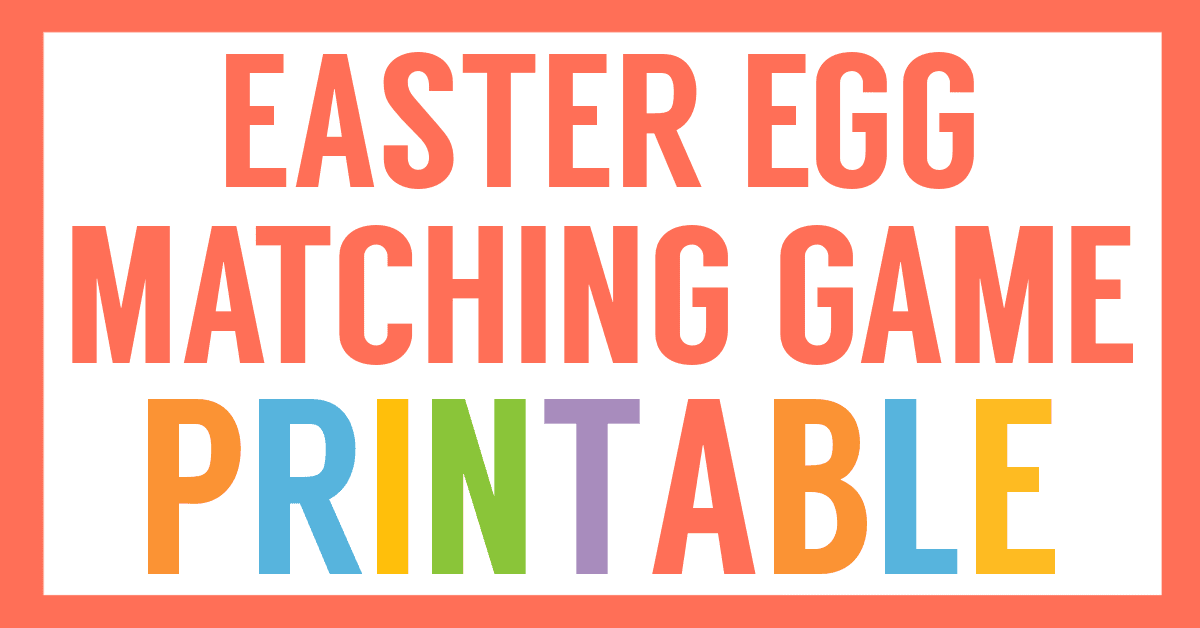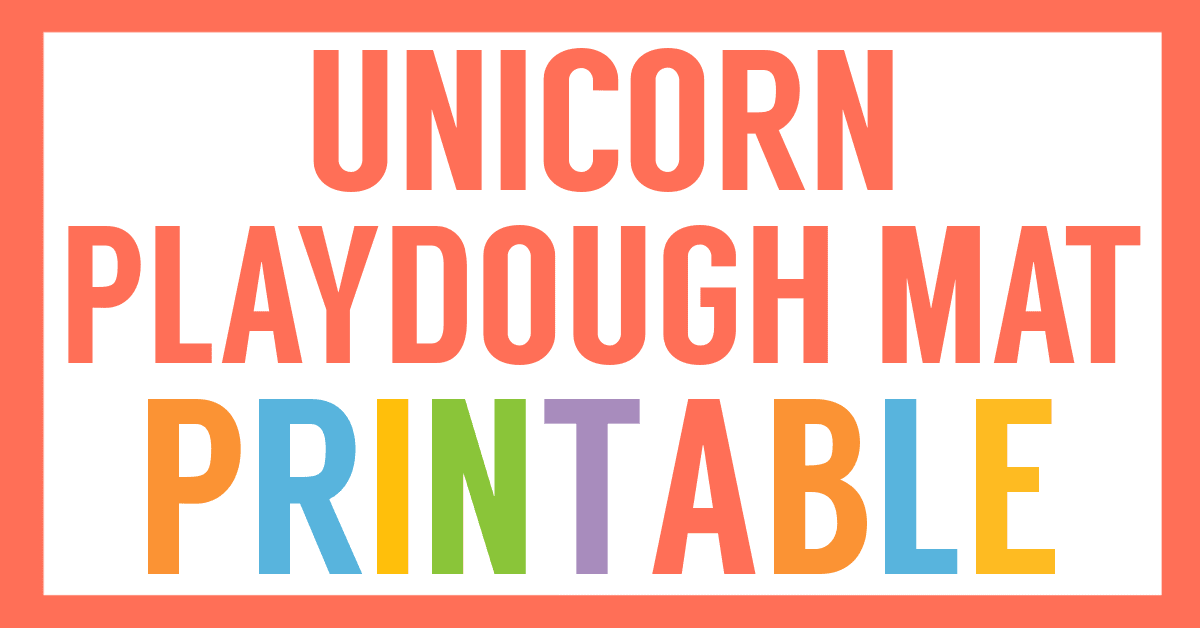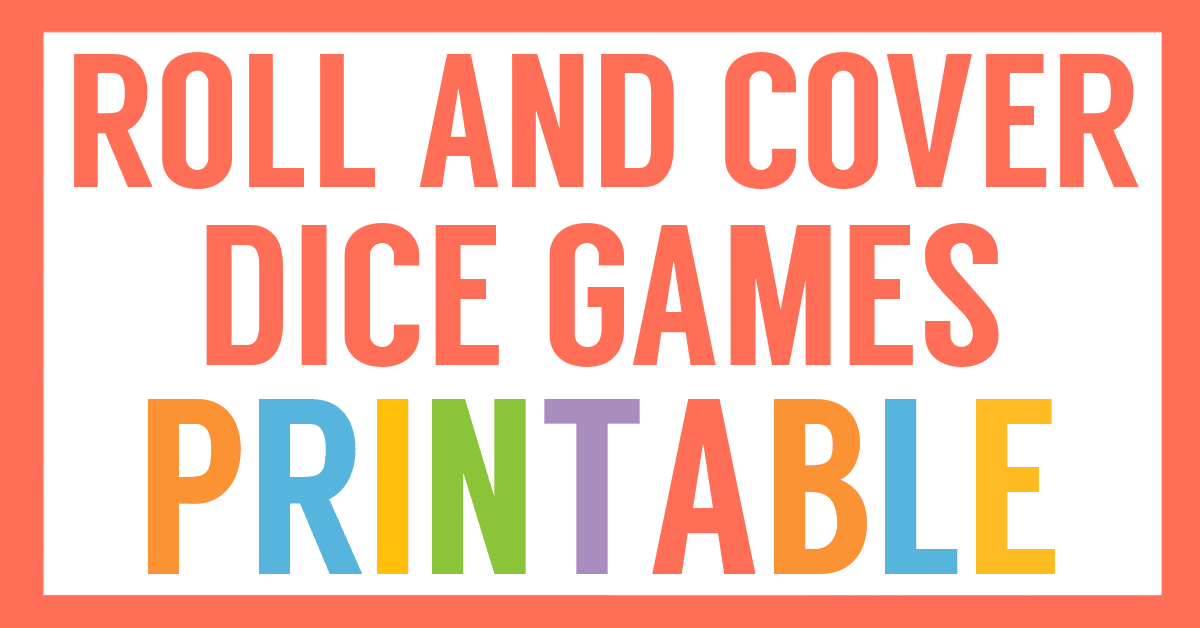Affiliate Disclaimer
We sometimes use affiliate links in our content. This won’t cost you anything, but it helps us to keep the site running. Thanks for your support.
In this Sir Cumference story, Sir Cumference and the Dragon of Pi, a potion changes Sir Cumference into a fire-breathing dragon. Can Radius change him back? Join Radius on his quest through the castle to solve a riddle that will reveal the cure. It lies in discovering the magic number that is the same for all circles.
Thanks to Debbie, Wende, and Miriam for creating the Sir Cumference unit studies and printables.
Sir Cumference and the Dragon of Pi Unit Study Lessons
Here are a few of the lessons you will find in this Sir Cumference and the Dragon of Pi unit study:
Pi
Pi is a number that is equal to 3.14159. It is the ratio of the circumference of any circle to its diameter. No matter what size circle you make the ratio of the circumference to the diameter will always be pi. Pi is used to find the circumference and area of a circle. Here are the formulas for finding the circumference and area of a circle using pi. Circumference=2πr (2 x 3.14 x the radius) Area of a circle=πr2 (3.14 x the radius squared) For an older child, have him or her figure out the circumference and area of a circle if the radius of the circle is 2. (Answers: C=12.56 A=12.56) How about if the radius is 4? (Answers: C=25.12 A=50.24)
Testing Pi
Have your child draw different sizes of circles with a compass. With a piece of string measure the circumference of a circle (measure it with a string and then put the string against a ruler to get the measurement) and the diameter of the same circle. Pi is actually the circumference of a circle divided by the diameter. Have them divide the circumference of the circle they just measured to the diameter…does your child get a number close to 3.14? Have him/her try to see if it works with some of the other circles that were drawn. Here’s another way to test pi. This activity might be easier for a younger student. You will need a plate or other round object. Wrap string around the circumference of your circular object. Cut the string when it is exactly the same length as the circumference. Now take your “string circumference” and stretch it across the diameter of your circular object. Cut as many “string diameters” from your “string circumference” as you can. How many diameters could you cut? You should end up with 3 full diameters and a little left over (the .14 or 1/7 part of pi).
History of Pi
Pi is the 16th letter of the Greek alphabet. William Jones, a Welsh mathematician, first used pi as a number. Can your student find Wales on the map? But it was Leanhard Euler (see “The Sword in the Cone” lessons) who made the symbol popular. The π symbol replaced the letter “p” which stood for “periphery” (meaning the edge of an object). It may be fun for your child to learn the Greek alphabet this week. Use prepared printable so your child can try his hand at writing the Greek alphabet.
To access all of the lessons in this Sir Cumference and the Dragon of Pi unit study, grab an easy-to-print file at the end of this post.
How to Get Started with the Sir Cumference and the Dragon of Pi Unit Study
Follow these simple instructions to get started with the Sir Cumference and the Dragon of Pi unit study:
- Buy a copy of the book, Sir Cumference and the Dragon of Pi, or grab one from your local library.
- Print the Sir Cumference and the Dragon of Pi unit study.
- Choose the lessons you want to use with your student (a highlighter works great for this).
- Choose and prepare the printables you want to use with your student.
- Enjoy a week of learning math through literature.
Download Your Sir Cumference and the Dragon of Pi Unit Study and Printables
Simply click on the image below to grab your free Sir Cumference and the Dragon of Pi unit study.
Sir Cumference General Lessons
The unit study writers created a set of general lessons to go with all of the Sir Cumference books. These will help you create a more balanced unit, if you want to incorporate other subjects such as social studies.
You can grab these lessons by clicking on the image below.
Note: These do NOT include the Sir Cumference and the Dragon of Pi unit study.
More Sir Cumference Math Resources
We have five unit studies based on the Sir Cumference books. Be sure to check out the other four:

